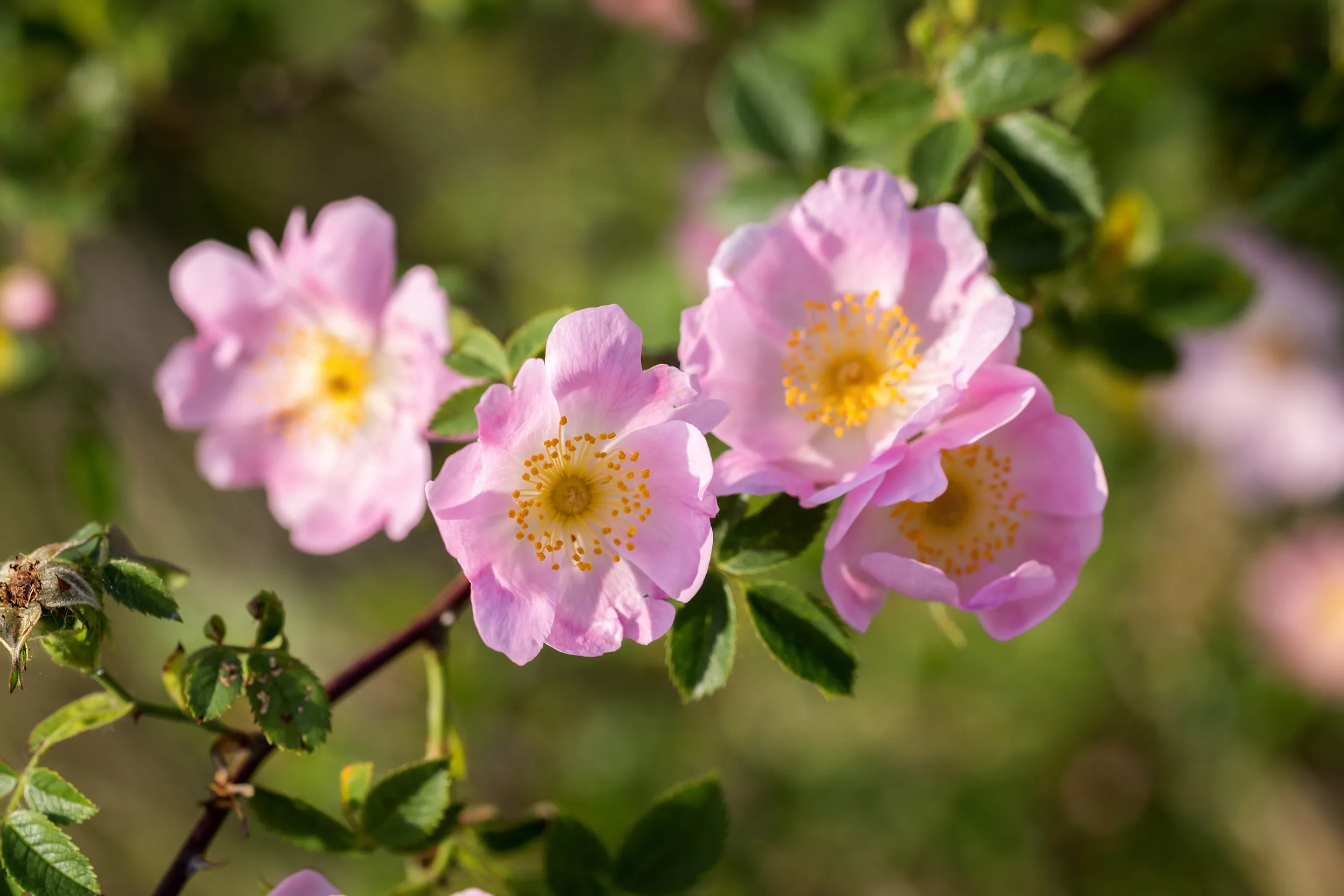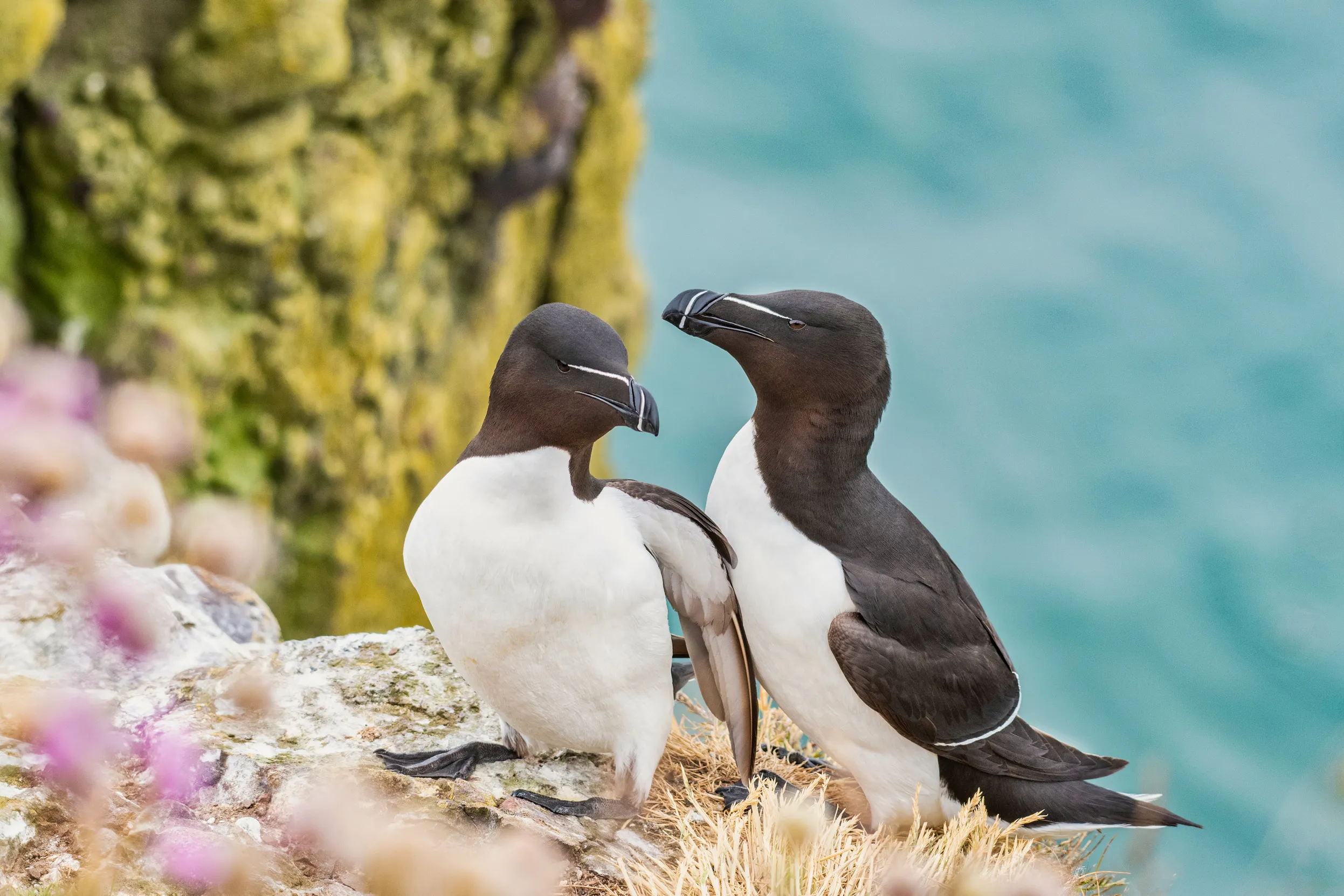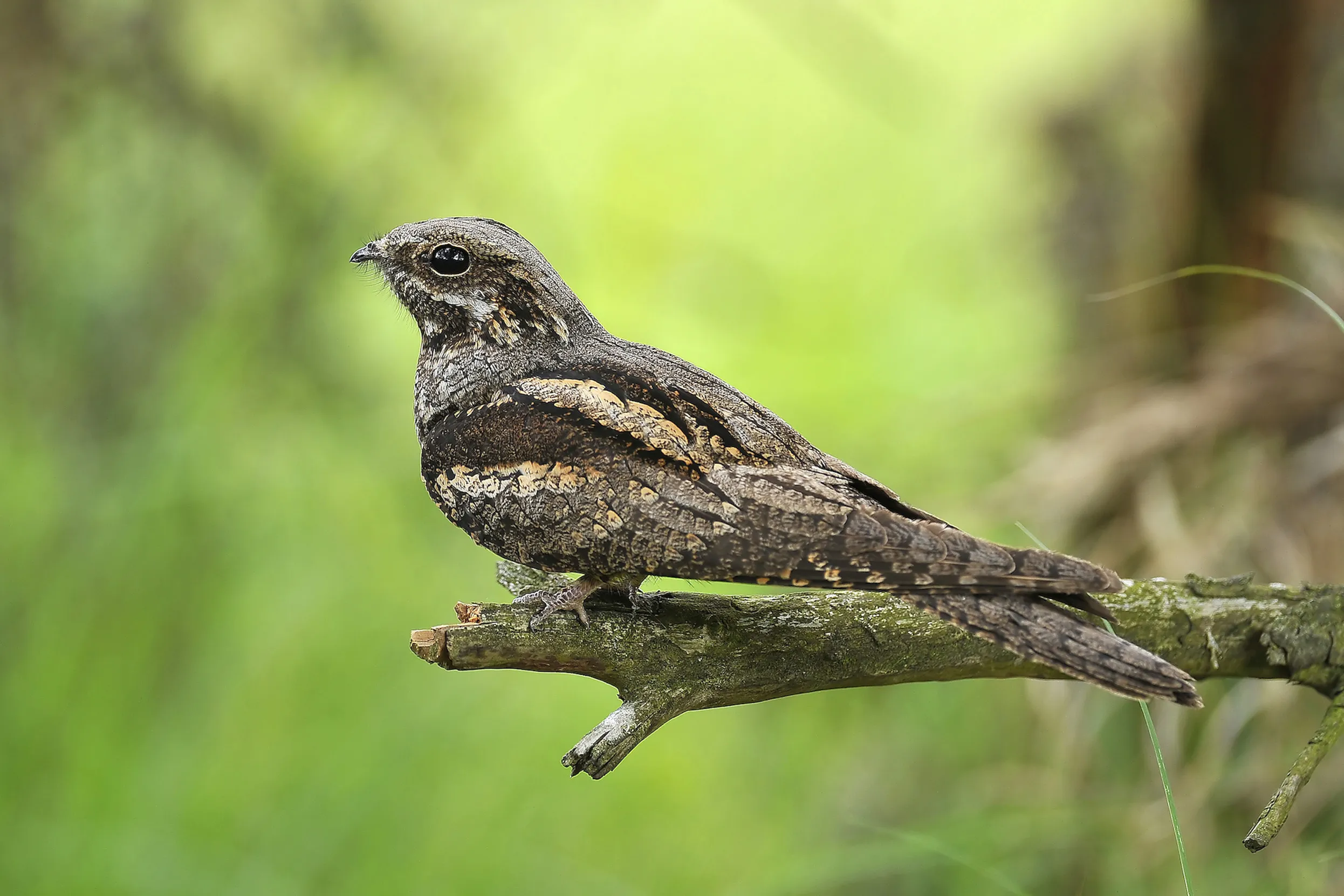Advice
Share a Christmas message for someone special
Give a lasting gift to nature this Christmas with a charity donation, while sharing your special memories.
Ready to celebrate the solstice? In June, we welcome in the first days of summer and embrace evening light that stretches into late hours. Make the most of your time in the sunshine and seek out some summer spectacles.

Most seabirds spend the majority of their lives out on the open waters, many miles away from our shores. As the weather begins to warm, we’re offered a glimpse into the private lives of these pelagic birds as they return to breed on our sea cliffs in internationally important numbers.
The ledges of coastal cliff faces are packed full of Guillemots and Razorbills, their eggs perched precariously. Puffins take advantage of grassy edges and rocky crevices, laying in second-hand rabbit burrows or chambers they’ve excavated themselves. Out on the choppy waves, Gannets use their binocular vision, at heights of 30 metres, to pick out a fish dinner from shoaling schools. The skies are filled with the cries of squabbling Herring Gulls overhead.
June and early July is the perfect time to take a summer sea cliff stroll with a pair of binoculars and sift through a bustling seabird city. Birds will be hurtling in and out of their nest sites as they provide for recently hatched, hungry beaks. Looking for a seabird experience with a difference? Get your sea legs at the ready and book a boat cruise at RSPB Bempton Cliffs: RSPB Puffin and Gannet Seabird Cruises 2024.

If you visit East Anglia in early June, you might be treated to a rare sighting of the UK’s largest butterfly. Swallowtails in the UK are restricted to the Norfolk Broads (with occasional migrants sometimes turning up further south) where these wet fenlands specialists lay their eggs on Milk Parsley. They overwinter in a chrysalis which can withstand the low temperatures. However, these chrysalises cannot survive prolonged periods of flooding throughout winter, and so populations may be impacted as the climate changes and extreme weather events increase. The butterflies take flight for only a fleeting time, generally three to four weeks, with peak sightings occurring in late May through to June. If you’d like a chance to see one of the UK’s rarest butterflies, then RSPB Strumpshaw Fen, one of the few remaining breeding sites, is open for visitors.
If you can’t make it to Norfolk, then fear not! Keep your eyes out in your garden or local green space for some summer specialities like Painted Lady, Holly Blue, Small Copper and Marbled White.

We spend the spring months listening to birds serenade potential partners with their songs. Over the following few weeks, we can see them in our gardens and greenspaces, flitting back and forth from their nests to bring back food for their chicks. And finally, as late spring arrives, we begin to see the evidence of all their hard work as young birds leave their nest for the first time.
While Robins and Blackbirds can be seen as early as April, many of our other garden visitors like Blue Tits, Starlings and Great Spotted Woodpeckers begin to appear in late May and early June.
You might see fresh fledglings out and about, exploring the world for the first time, their feathers still downy and the yellow gape peeking from the edge of their beak. At this stage, the fledgling is learning how to live in the outside world without its parents, but its mother will be somewhere nearby, keeping an eagle eye.
It’s important to leave a baby bird undisturbed. If you are concerned about the safety of a bird, check out who to call. Who should I call if I am concerned about a bird? (rspb.org.uk)

Shrouded in folklore and myth, Nightjars are colloquially known as ‘goatsuckers’. These birds were historically found near farmers’ livestock, and before people had any knowledge of their insectivorous diet, they were assumed to be stealing milk. We now know that they were feasting on the bounty of food that surrounded the animals.
To add to their mystery, Nightjars are active at dusk, dawn and at night. Their presence is often only made obvious by their ‘churring’ song, best heard in the evening. Their soft plumage means that they can fly silently, and their camouflage makes them almost indistinguishable from a chunk of tree bark, perfect for nesting on the ground.
Thanks to the BTO’s tracking studies, we now know that these elusive birds migrate to the UK from South Africa. These birds are in widespread decline, due to habitat loss – scarce lowland heathland being one of their favoured breeding habitats – and reduced feeding opportunities. However, they can be seen (or heard!) taking advantage of recently felled plantation forests.

After sitting on an egg for 23 to 25 days, Avocet mothers quickly become empty nesters. Their chicks are precocial which means that they’re ready to take their first shaky steps within only a few hours of hatching.
Breeding Avocets returned to the UK in 1947, shortly after the end of World War II. Their recolonisation was a side effect of the intentional flooding of East Anglian coastal marsh as a defence measure. The opening of sluices resulted in the creation of pools and reedbeds, offering up prime habitat for wading birds, along with Bitterns, Marsh Harriers and other wetland specialists. The land was taken on by the RSPB in the same year and became the now-flagship reserve, Minsmere. Here, Bert Axell MBE, one of the first wardens for the organisation, pioneered the habitat management method of creating shallow lagoons and islands for breeding birds. Known as a ‘scrape’, this innovation has been adopted around the UK and resultantly, populations have boomed. Avocets can now be seen with chicks as far north as Northumberland. They have become a poster species for conservation success – and take pride of place on our logo!
Nesting in loose colonies in coastal areas means that these striking birds can make for easy viewing in spring and summer. Wildlife hides on reserves offer the perfect opportunity to see their chicks without running the risk of disturbing them.

As we enjoy a sizzle of summer sunshine, it’s important to give wildlife a helping hand as temperatures are hotting up. When puddles and ponds begin to dry, it can be harder for birds
to find places to drink and bathe. Be it a bird bath or a water butt, there are different ways you can add a feature in your garden that could be a lifeline for your local critters.
If you’re looking for top tips to give wildlife a helping hand throughout the seasons, then make sure to sign up for our Nature on your Doorstep mailing list.

Titchwell: Take a wander through woodland glades and reedbeds, and then watch wading birds and wildfowl on freshwater lagoons and saltmarsh pools at Titchwell. June’s a great time to see baby Avocets, Redshanks, Ringed Plovers and Oystercatcher chicks from a safe distance. Titchwell’s perfectly positioned hides make for a prime opportunity to practise wildlife photography.
Aylesbeare Common: Part of a patchwork of lowland heathland in East Devon, Aylesbeare Common is an ideal birdwatching spot. Dartford Warblers and Stonechats perch on top of the Gorse bushes in the summer sun, while Nightjars hawk for insects in the evening. Watch dragonflies and damselflies skim over the pools in summer while Hobbies hunt them out overhead.
Fowlsheugh: Get a fix of fresh sea air on this trail through clifftop grassland. Fowlsheugh holds host to 115,000 breeding seabirds during spring and summer. See if you can spot Puffins scattered in amongst Guillemots, Razorbills and Kittiwakes.
Loch Garten: This lichen-encrusted Caledonian pinewood forest in Abernethy offers visitors the opportunity to see rare Red Squirrels and Crested Tits. Take a virtual tour of the recently refurbished Nature Centre, where nest cameras give visitors close views of Ospreys, Goshawks and White-tailed Eagles.

Ynys-hir: Explore a mosaic of habitats, nestled between the mountains of southern Snowdonia and the north Cambrian mountains. Watch Pied Flycatchers darting through Welsh Oak woodland, while lucky visitors might catch a glimpse of Otters splashing about in freshwater pools.
South Stack: Look out over South Stack island and the Irish Sea on a coastal cliff trail. Here, you’ll see Puffins, Razorbills and Guillemots raising their broods on the rugged rock faces. South Stack is home to Choughs; keep an eye out for its distinctive red bill and legs and their onomatopoeic ‘chow’ call.
Rathlin Island: Witness a summer spectacle at Rathlin Island, home to Northern Ireland’s largest breeding seabird colony. Venture over rocky trails on cliffside paths or get close-up views of Puffins at the Seabird Centre. Make sure to listen out for the ‘crex crex’ call of the elusive Corncrake.
